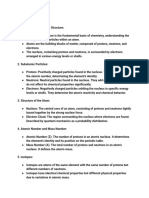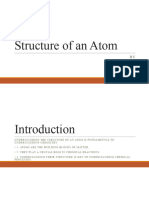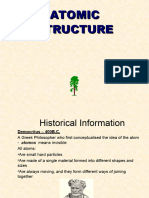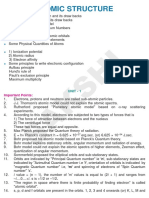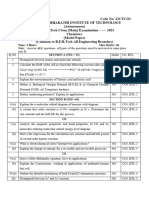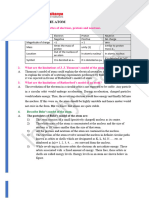0% found this document useful (0 votes)
21 views3 pagesAtomic Structure
Atomic structure encompasses the arrangement of protons, neutrons, and electrons within an atom, forming the basis of chemistry and physics. Key concepts include the atomic number, mass number, isotopes, and the forces that hold the atom together, such as electrostatic and nuclear forces. The document also outlines the evolution of atomic models from Dalton to the modern quantum mechanical model, highlighting the significance of quantum numbers and periodic trends.
Uploaded by
kumarrameshofficiallocalCopyright
© © All Rights Reserved
We take content rights seriously. If you suspect this is your content, claim it here.
Available Formats
Download as PDF, TXT or read online on Scribd
0% found this document useful (0 votes)
21 views3 pagesAtomic Structure
Atomic structure encompasses the arrangement of protons, neutrons, and electrons within an atom, forming the basis of chemistry and physics. Key concepts include the atomic number, mass number, isotopes, and the forces that hold the atom together, such as electrostatic and nuclear forces. The document also outlines the evolution of atomic models from Dalton to the modern quantum mechanical model, highlighting the significance of quantum numbers and periodic trends.
Uploaded by
kumarrameshofficiallocalCopyright
© © All Rights Reserved
We take content rights seriously. If you suspect this is your content, claim it here.
Available Formats
Download as PDF, TXT or read online on Scribd
/ 3









